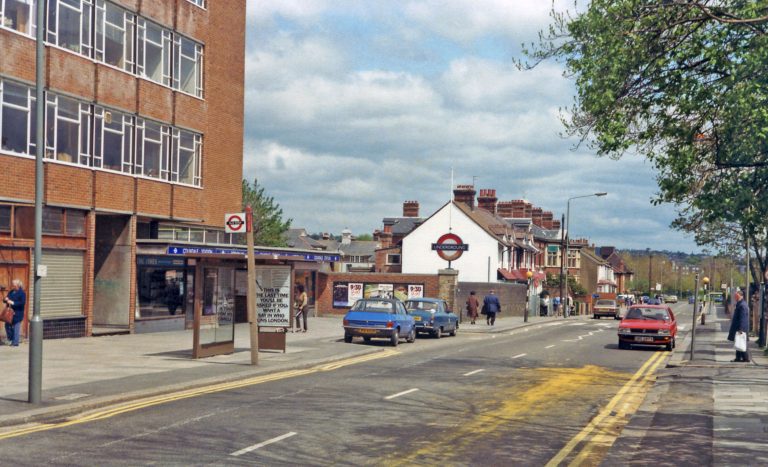Inspirational new housing the stand-out trend for 2015 The Royal Institute of British Architects (RIBA) is pleased to announce the winners of the 2015 RIBA National Awards, the most rigorous and prestigious awards for new buildings in the UK. RIBA National Award-winning buildings set the standard for good architecture. The shortlist for the coveted RIBA Stirling Prize for the UK’s best building of the year will be drawn from the 37 award-winning buildings announced today. Award winners include a beautifully-crafted wooden fishing hut on a small new estate in Hampshire (Fishing Hut), a crisp, modern malt whisky distillery inspired by the shape of a barley sheaf (Dalmunach Distillery), a patterned red-brick church centre and apartments surrounding a listed church in Hackney (St Mary of Eton) and a modest and calm cancer care centre (Maggie’s Lanarkshire). The stand-out trend of the 2015 RIBA National Awards is the prevalence of high quality new housing developments. One quarter (8) of the 37 award winners are housing projects by developers ranging from large housebuilders and housing associations to smaller bespoke schemes by private investors. At a time when the lack of decent housing dominates the political agenda, amongst the winning projects are some exceptional examples of well-designed affordable and sustainable new developments. Great examples include the regeneration of over 200 homes on the Gorbals district of Glasgow (Laurieston Transformational Area) and, at the other end of the size scale, an elegant five-storey, 13-home affordable housing block for Peabody in East London (Darbishire Place). Private housing developments include Richard Rogers’ housing towers on prime London real estate (Neo Bankside), a 45 home canal-side development in west London (Brentford Lock West) and 14 distinctive homes stepping down through a gap in the heart of St Andrews’ old town conservation area (West Burn Lane). Exceptional education buildings also feature strongly on the winners list. From a small delightful nursery school for the University of Edinburgh (Arcadia Nursery), new state schools (Burntwood School, Ashmount Primary School), an independent school building (Uppingham School Science Centre) and a special needs school building (Alfriston School pool building) to major university buildings (University of Greenwich library building, Manchester Met Student Union), these projects will benefit generations of children, students and staff. One quarter (9) of the RIBA National Award winners are private homes and garden buildings. Ranging from a stone and copper-clad tiny retreat buried in a Wiltshire garden (Myrtle Cottage Garden Studio), to an architect-owned low-energy house on the edge of a Somerset village (Dundon Passivhaus) and a strikingly modern family house in County Down (House at Maghera). Speaking today, RIBA President Stephen Hodder said:
“The RIBA National Awards provide a unique insight into UK construction, investment and design trends.
“The UK is blighted by poor-quality new housing and dilapidated school buildings, so I am delighted that the notable trends amongst this year’s RIBA National Award-winners are the volume of inspiring new housing and education projects.
“I am particularly pleased to award an unprecedented number of housing developments. The innovative spirit of these projects sets them apart from the ubiquitous, uninspiring housing developments being built all over the country. Our award winners show it is possible to build exceptional new housing developments that are profitable, sustainable and desirable places to live.
“Well-designed school buildings have the power to inspire students and teachers. This doesn’t mean every new school needs to be a show-stopper – like Burntwood or Ashmount – but we must ensure that value for money and the best possible design go hand in hand.
“One intriguing design trend is the use of brick, in all its hues (British, Danish), patterns and textures, as the dominant material for many of the award winners. Brick is firmly established in the British psyche as a safe, long-lasting, familiar material. Our award winners have used bricks to great effect – whether to respond contextually, or to imbue their buildings with humanist qualities.
“The admirable aspect shared by every one of our winners is ambition. The combination of ambitious clients, architects, local leaders and a supportive local community leads to great new buildings. All 37 of our RIBA National Award winners should provide inspiration for developers, local authorities and architects alike and will delight generations to come.”
The 37 buildings that have won a 2015 RIBA National Award are: LONDON 1. University of Greenwich Stockwell Street Building, SE10 by Heneghan Peng architectsLocated in the UNESCO World Heritage Site, this delightful building houses the main university library and the departments of Architecture, Landscape and Arts. 2. Burntwood School, Wandsworth by Allford Hall Monaghan MorrisBold, characterful new campus buildings with light-filled rooms and corridors add to a sense of this being a very collegiate school. 3. St Mary of Eton Church, Apartments and Community Rooms, Hackney Wick E9 by Matthew Lloyd Architects LLPThree new buildings, including 26 new apartments, in patterned red brick that responds to the original Grade II* listed church. 4. The Foundry, SE11 by Architecture 00 LtdRefurbishment of an old shoe polish factory into a flexible building for ethical organisations; the expressive language of the architecture appropriately suggests informality, openness and the idea of a collective of individuals. 5. NEO Bankside, SE1 by Rogers Stirk Harbour + PartnersNew housing towers with exo-skeleton and external lifts on London’s South Bank – a well-mannered example of a structurally expressive architecture. 6. University campus for Hult International Business School, E1 by Sergison Bates architectsNew undergraduate campus in a converted Grade II-listed brewery with a clear architectural identity and strong aesthetic sense. 7. Bonhams, W1 by Lifschutz Davidson SandilandsExemplary urban infill on an extremely complicated site. Grand new entrance and refurbished Deco facades. 8. Ashmount Primary School, N8 by Penoyre & PrasadExemplary zero-carbon school and nursery which carefully manipulates its plan and cross-section to draw in natural light and reveal woodland views. 9. Levring House, north London by Jamie Fobert Architects LtdSpacious and luxurious Danish-brick-clad house on the corner plot of a typical London mews. 10. Foyles,








